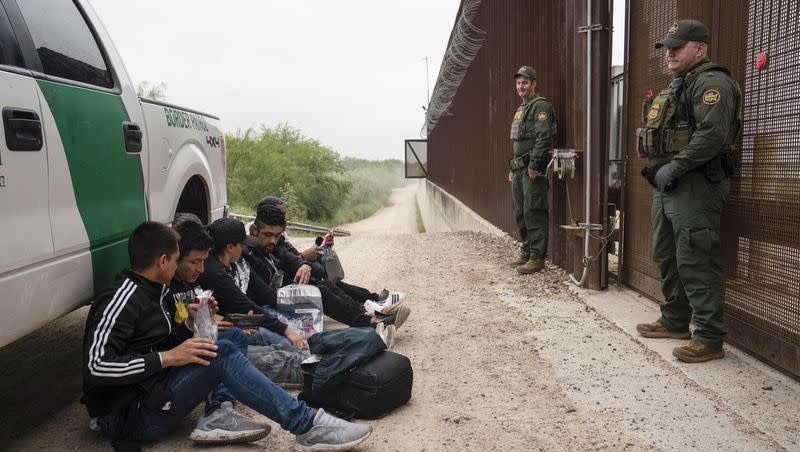Opinion: Congress could fix the border mess — Why don’t they?

- Oops!Something went wrong.Please try again later.
- Oops!Something went wrong.Please try again later.
Title 42, enacted by former President Donald Trump at the start of the pandemic in order to protect the nation’s health by allowing border officers to turn back asylum-seekers at the southern border, is expiring. It would make no sense to extend it, given that President Joe Biden is ending the public health emergency associated with COVID-19 at midnight Thursday.
But the end of Title 42 will almost certainly lead to a new crush of thousands trying to cross the nation’s southern border. The New York Times this week said people are amassing in border towns ahead of the expiration date.
“Border agents, state and local officials and even President Biden’s top aides in Washington are all bracing for the arrival of tens of thousands of migrants in the coming days,” it said. The Texas cities of Brownsville, Laredo and El Paso have declared emergencies.
None of this would be happening if Congress had done its job and passed a meaningful immigration reform bill.
This is not a new lament. We have been urging action at least since George W. Bush was president. And yet, politicians on both sides of the aisle have preferred inaction, the casting of blame on the other side, and kicking the issue to the White House where, eventually, executive action is challenged in the courts.
Related
Two years ago, Bush spoke to a webinar on the subject and said the issue had become too politically hot for any negotiated solution. He authored a book, “Out of Many, One,” that includes portraits of immigrants and brief essays on their lives.
We disagree that the problem, frustrating though it may be, is unsolvable, but we agree that a good tactic is to put a human face on the problem. The need for compassionate and commonsense solutions is urgent. Unfortunately, few people want to view the problem head-on.
Which isn’t to say workable solutions have not been presented. Utah Sen. Mike Lee has introduced the Stopping Border Surges Act, which is designed to protect vulnerable migrants, including children, and to tighten requirements for obtaining asylum.
The bill would let children stay with parents as long as they are detained. The current 20-day limit on child detentions is an incentive for adults to bring children with them at border crossings, because the adults know the system will release them at the same time as their children.
Lee’s bill would make sure unaccompanied children get a hearing within two weeks of their detainment, and border patrol agents would be trained in how to detect child trafficking victims.
This should, at least, be a starting point for good-faith deliberations over a solution. That is how a deliberative body with an interest in real problem-solving would behave.
And Utah’s other senator, Mitt Romney, has initiated a letter signed by 14 other Republican senators urging the Biden administration to complete the border wall started under the Trump administration.
President Biden has his own solution, which he plans to impose after Title 42 expires. News reports said he would open processing centers in Guatemala and Colombia, which would be used for screening asylum-seekers before they get anywhere near the United States. Migrants tend to come through those nations on their way to the southern border. The centers would consider people on an appointment basis only, with appointments available online.
Related
The centers would determine eligibility and explore potential legal paths to the United States. Other refugees could become eligible for entry if they have sponsors within the United States. Those who failed to follow this new system would be deported to their home countries.
But the president has given no details as to when these processing centers would be opened, and The Wall Street Journal reports that the ACLU and several Republican-led states are already contemplating lawsuits against various parts of the plan.
Which, of course, follows the script of congressional inaction, followed by White House edict, followed by court action.
Title 42’s demise has been one of the most predictable events of the Biden administration, and yet the White House seems unprepared for the crush of people that is likely to follow. The president has dispatched 1,500 soldiers to the border region, which seems altogether too little when the expanse of that border is considered.
And yet it is Congress that must bear the brunt of the blame. An orderly and compassionate, yet firm, immigration reform plan should have been made law years ago. It can and should be negotiated and passed in coming weeks.

